
Simon Evans10/06/21
9 min read

Digital marketing has come a very long way since the first online display advert popped up in 1994.
A range of channels require specific skills to get the best from them, there seems to be a new social media platform appearing every year and content is created at a rate never seen before by more people in more formats across more mediums.
There are so many opportunities within digital marketing that the danger can be to do a little across all channels, spread yourself too thinly and end up not seeing the results you desire.
So if you don’t have the budget or resource to do everything, how do you focus your third-sector efforts on what is going to have the biggest impact?
In this digital transformation article, we try to answer that, give you some questions you should be asking yourself and provide pointers on the techniques you can use to save you precious time.
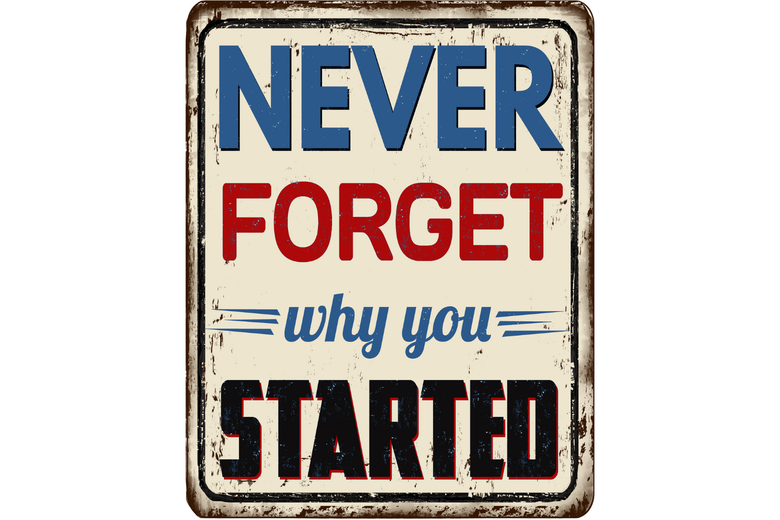
Marketing’s not easy, right? There are no black-and-white answers and it can be all too tempting to get sucked in by the type of click-bait ‘advice’ such as ‘Why your marketing will fail unless you use 11 hashtags and 7 emojis on Instagram RIGHT NOW’ or believe the ‘gurus’ who profess that Facebook ads are the only thing you’ll need to succeed.
While the options within digital marketing are many, the important thing to remember is that we’re still talking about marketing.
Therefore, one of the principles for charities remains: being able to clearly articulate why people should support you, whether through donations, volunteering or another means.
The first questions to ask are: ‘Why does the charity exist?’ and ‘How do we deliver on that?’
And the answers should be super specific.
As charities get older and maybe adjust the projects they work on, the purpose might get lost - but this is a crucial aspect of marketing.
In marketing parlance, this is often described as a unique value proposition.
Commercial entities can struggle to define this, particularly if their focus is only on sales and they want to beat the market to make as much money as fast as possible.
But charities shouldn’t suffer from this although ‘competition’ does still play its part.
Many animal charities exist, for example, so why should people be interested in yours? What makes your purpose different and compelling enough to fully resonate?
The Charity Commission reported, in 2019, that there were more than 168,000 charities registered. That’s a lot of competition for people’s hard-earned income.
Below are a couple of ways of honing your proposition, provided within a very helpful article on the Prosper Strategies website.
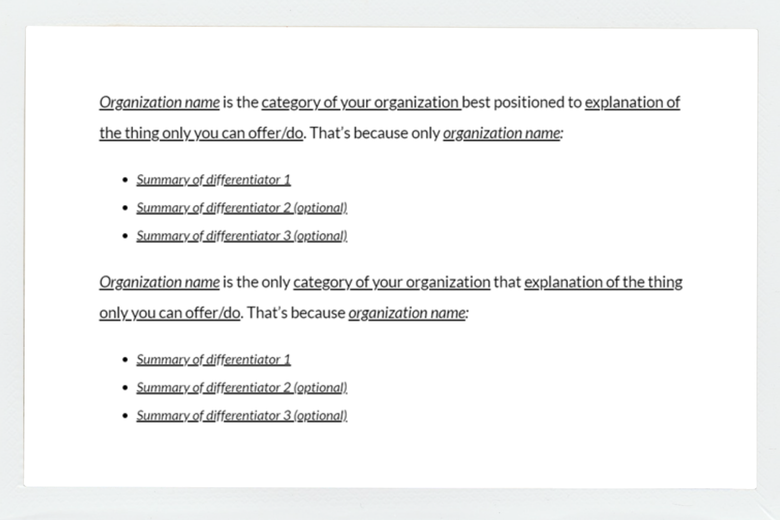
After you’ve created a proposition, you should then ask the question: ‘Can another charity say the same thing?’ If the answer is ‘yes’ then your proposition still isn’t strong enough and you’ll need to try again.
Being clear on purpose then makes core messaging for marketing activity much easier.
Just look at Make A Wish - you can see how their purpose translates into their core messaging:
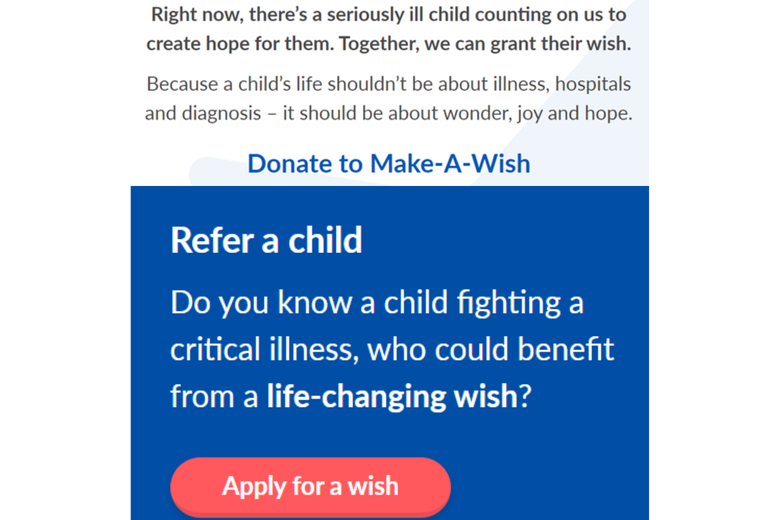
A person unaware of Make A Wish can read the copy above and know exactly why the charity exists and how it delivers on that.
With online audiences and usage continuing to grow, being ultra-specific on your charity’s purpose and turning that into core messaging for your website and social media profiles is a fundamental of digital marketing.
Once you’ve nailed this aspect, you’ll next want to consider how to generate increased awareness of your charity - and it is only at this point that you should begin to consider which digital marketing channels to use.
The promotion of your charity can be achieved through traditional ‘push’ marketing i.e. taking your purpose and message to audiences but the advent of digital now also allows you to adopt ‘pull’ marketing techniques i.e. drawing in people who are actively searching to support a cause like yours.
Let’s take a look at those ‘pull’ techniques first because they can often be complex and, strategically, even more so for charities.

Search Engine Optimisation can be a confusing, often misunderstood area of digital marketing with charities believing that it can alone drive large increases in the amount of traffic to their website.
This might be true in some instances but the questions to ask here are: ‘What are the searches relevant to our charity?’ and ‘How many of those types of searches are being conducted?’
If you’re in a particular third-sector niche, there’s going to be a limited volume of searches relevant to why you do what you do. If there are only 1,000 searches per month which relate to why your charity exists you shouldn’t view SEO as being able to increase your traffic by 10,000 visits per month.
And this is where the misunderstanding of what SEO can do for you hits home.
Just because you’re a charity does not mean you’re going to appear for any searches which contain the word ‘charity’.
Search algorithms are so advanced that they can now make a good judgement call on the intent of the user. Gaming the system through SEO is no longer really a thing.
With that in mind, you should be viewing SEO as an ongoing, continual process which includes:
Ideally, you would even move away from a focus on specific keywords and concentrate on the above three points. The rest - i.e. a stronger presence in organic search - should follow, although be prepared for significant improvements to take time.
When factoring in SEO into your marketing plans, you also need to understand the parameters in which you are operating.
Let’s look at an example. You might think you want your cat or dog charity to rank for the search term ‘animal charity’ because it has a good number of searches - between 10,000 and 100,000 globally - and more than the more specific terms.
And cats and dogs are animals, after all.
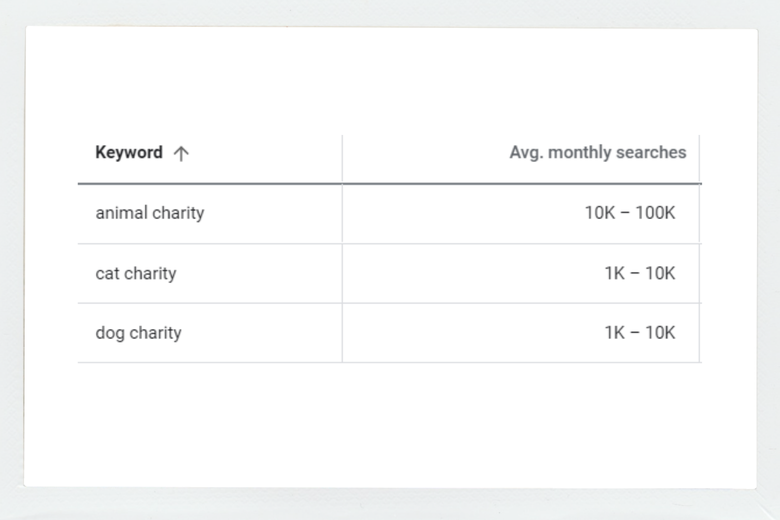
But if you want to rank for ‘animal charity’, that is going to be very difficult, if not impossible, because of search engines’ desire to deliver the most relevant results to searchers.
Just take a look at page 1 for that search term ‘animal charity’:
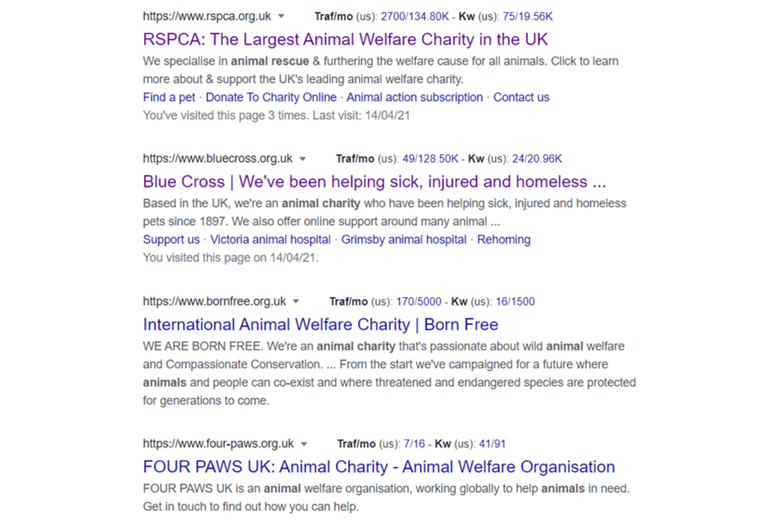
Google’s algorithm places these charities in the top few positions because they are animal charities; not sub-sets such as dog or cat charities.
So when analysing how much potential traffic there is to capture for your niche, you need to focus on relevancy i.e. the search volume for ‘dog charity’ or ‘cat charity’ rather than ‘animal charity’. Globally this would mean you’re going after a share of the 1,000-10,000 global searches being made per month as opposed to the 10,000-100,000 global searches of ‘animal charity’.
This means you can adjust your expectations accordingly - and ask the right questions of any external SEO agency you might be working with.

Google’s web page experience update has certainly set the tongues wagging and the fingertips twitching.
Core Web Vitals is the name Google has given to three metrics which measure how a page performs. They are:
It is believed that these factors of page experience are to become a ranking factor for Google - but what does that practically mean for your website?
Well, in essence it means that you - or your developers - should have a focus on providing a fast, strong experience. In short, nothing they shouldn’t have been concentrating on previously.
Don’t get too hung up on Core Web Vitals. Our good friends at Quickfire Digital have published an article which provides more details and should put your minds at rest.
As with all elements of SEO, make your website visitors happy and you’ll be in a good position.

Pay-per-click, or PPC, is commonly used to reference the paid-for marketing you’re running in Google Ads. Technically, PPC covers other platforms as well, but I don’t want to get into semantics.
In many ways, the questions you should be asking yourself within Google Ads campaigns are the same as those SEO ones. After all, you’re still attempting to match your charity’s presence to what users are searching for.
The biggest strategic difference, though, is the pace at which you can potentially make a difference.
As we’ve said SEO should be viewed as ongoing work and it can take a number of months to see the results of improvements you’ve made.
With PPC, you can get a campaign live in days with the potential for your adverts to be seen and clicked on.
I say ‘potential’ because there is no guarantee that your advert will appear - and that’s even if your maximum bid is higher than other charities also wanting to appear for the groups of keywords you’re targeting.
This is because Google’s paid search element has its own algorithm, called Quality Score. Key factors include your relevance against the keywords you’re bidding on, the historic performance of your Google Ads account and the website or page experience once users have clicked on your advert.
As with SEO, this area of digital marketing can be a little confusing but if you have an account which has historically performed well then you’re in a good place.
If you’re new to this tactic then you’ll want to start to build up that performance. Many organisations do this by bidding on their own name - something called brand-bidding - because it should almost guarantee you’ll be receiving relevant clicks. Here’s an example of this from NSPCC.
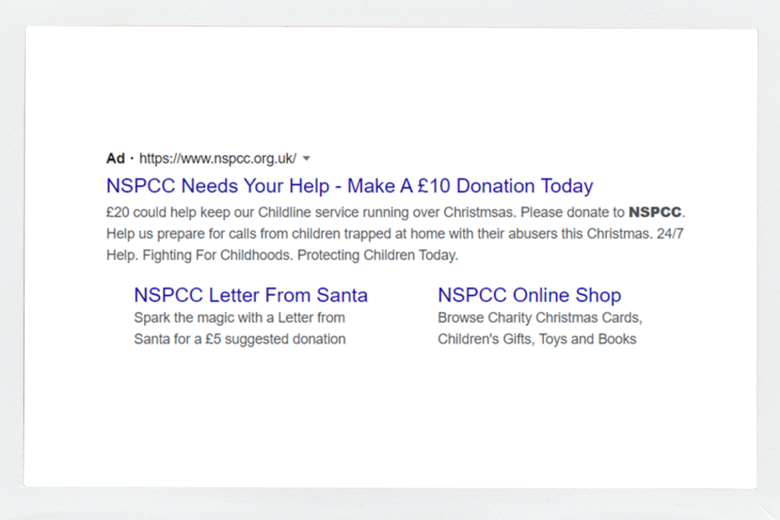
“But why should we pay for those clicks when we’ll receive them through organic search?” I hear you say. And it’s a good question. This is where you have to weigh up the amount you’ll spend against the benefits of building up your Quality Score.
Don’t forget that Google does offer a grant to charities and it is well worth checking out to see if you’re eligible.
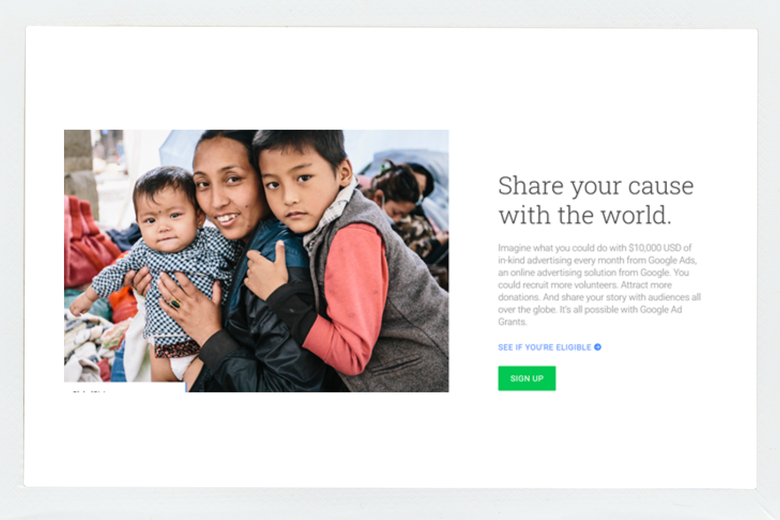
Running Google Ads can be a great way to experiment with your search marketing and you can turn your ads off at any time if you’re becoming worried about how much you’re spending.
If I received a pound for every time I’ve heard ‘they’re pointless...I never click on the ads’ I’d be a few quid better off than I am now, but people making such comments are missing the most crucial part of any marketing: it doesn’t matter what you do, it matters what your followers do.
And remember that point about wanting your dog or cat charity to appear for the search term ‘animal charity’? Not probable through SEO but you just might be able to gain a presence through PPC.

The web is chock a-block full of content about why you should be using TikTok and how-to guides on getting the best out of Facebook, so we’re not going to add to that here.
From a strategic perspective, you need to be clear on what you’re using your chosen social media platforms for:
Social media platforms can offer a fantastic way of promoting your charity through the use of quality content and working with influencers aligned to your own values.
But they can also be a time drain - particularly if you’re trying to manage multiple accounts - and it’s often the case that only strong content, which is subsequently given a monetary push, cuts through the noise.
If you’re posting organically - so you’re not spending anything to promote what you’ve created - prepare for a significant reduction in engagement.
We can see this from this recent Oxfam post on Facebook. The page has more than 366,000 followers but only a small percentage will see organic posts, leading to the level of interactions you can see below.
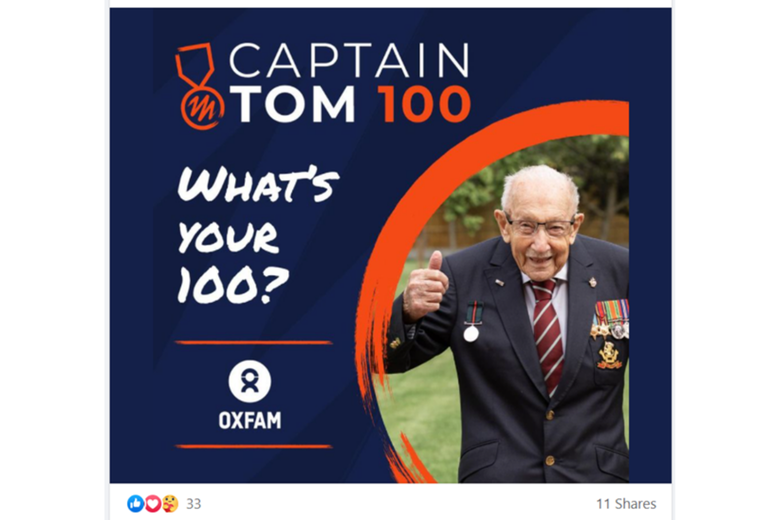
This isn’t a statement on what Oxfam has done here; it just highlights what you should expect. If you’re using social media purely in this fashion, go in with your eyes open.
While you can do some pretty clever and cool stuff across social media, you should again be clear on what your charity’s proposition is, what that means for the messages you’re putting out across the accounts you run and the delivery mechanisms.
Friends, families, influencers, commercial brands, sports teams, music stars and many more are competing for people’s time on social media, so ask yourself if what your charity is doing can genuinely divert their attention away from them to you.

Again, there are many useful articles on the types of email marketing software available, how to write killer subject lines and what to include in your emails. Here, I’ll pose some questions which hopefully will lead to you getting more engagement from your send-outs.
If you have a large number of subscribers on your database you should be grouping people into different lists, because not all emails will be relevant to all subscribers. For example, if you’re a follower but haven’t donated you won’t want to receive a blanket message which thanks you for your continued financial support because it’s simply not true.
If you’re living in Manchester and there’s a local fund-raising event in London, are you likely to attend?
Good email software will allow you to create multiple segments so spend time to group your followers sensibly - and name your lists clearly.
Why worry about manually sending follow-up or thank-you emails when you can do this automatically?
When a new person signs up to your email newsletter, ensure that you have a drip sequence of emails created which are sent over a period of days, or even weeks.
Don’t bombard them with all of your charity’s information in one bulky email; create a number of punchier emails each with their own message.
Not only will you be able to convey information more effectively, it will also allow you to see which emails are opened and which content is clicked on. This can allow you to improve future activity.
Most software makes it easy for you to add in the recipient’s first name in what you send out, but you should also focus on who it is coming from.
Much better to receive an email from a person with a name rather than a generic address. Better still, if you have a well-known volunteer in a particular area, send the emails in their name.
All of our inboxes are cluttered and emails can easily be missed or even accidentally deleted. A simple action is to create an automatic re-send to people who haven’t opened an email.
Stats show that this can have a significant impact on open rates. The example below shows the success of the ‘double-open email’ - sent out after the first email wasn’t opened.
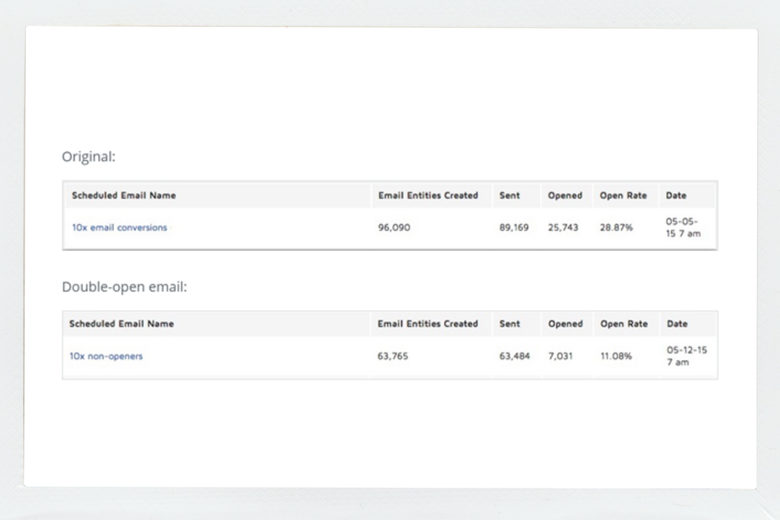
It’s an obvious step but one overlooked by many.
The ease of sending emails is, in a way, also its curse. Time is something we’d all like more of and it can be easy to just send an email once it’s designed and written.
However, adding in some extra preparation and planning time will lead to better results.
You could be forgiven for thinking that conversion rate optimisation (CRO) is a tactic used only for e-commerce brands as they aim to eke out more sales, but charity websites are also well placed to take advantage of it.
From a functional perspective, you can look at online donations in the same way as online store sales.
CRO is all about removing the barriers to completing a desired action and so therefore consists of many elements beyond simply considering if your ‘Donate’ button is clearly visible.
Once users click or press that button, how many steps are there before the process is completed? If you’ve got seven steps to complete, how do you make that six? Then five? Then four...and so on.
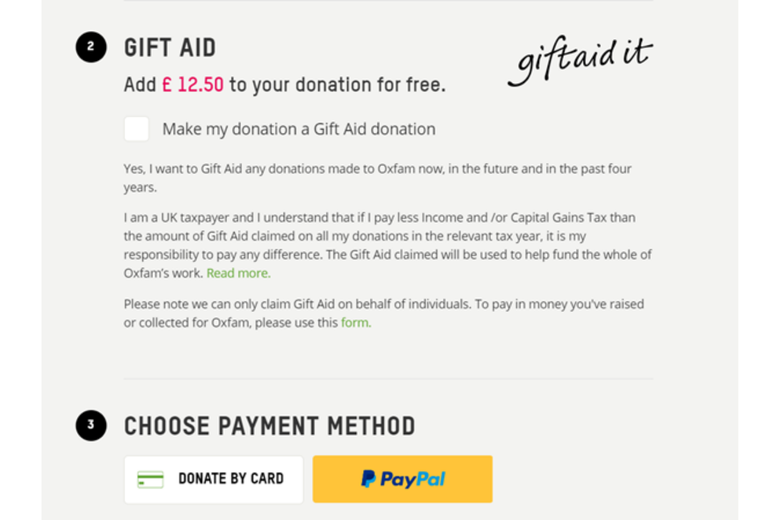
What payment options do you accept? Are there relevant donor testimonials about being delighted that their support is going directly to their chosen project? Is it simple to Gift Aid? Are all of the steps on one page or does each step have its own page and therefore increases the length of the process?
And CRO isn’t just about donations but other conversion points across your website such as subscribing to an email newsletter, signing up to be a volunteer or downloading a piece of content.
It’s always a good idea to periodically try completing actions on your website and then asking yourself ‘Could that have been easier?’
As the online and offline worlds come ever closer together, digital marketing should be viewed as - and will at some point even be called - simply marketing.
There are certain aspects which require specific knowledge and technical know-how, but cutting through the noise and being clear on what your charity represents, what its purpose is and how that is delivered upon daily is vital for success.
There are so many facets to digital marketing that the temptation is to dive into it all, but having clarity on what you want to achieve and setting aside time for planning and preparation is how you’ll end up making those so-important incremental gains which will generate long-term success.